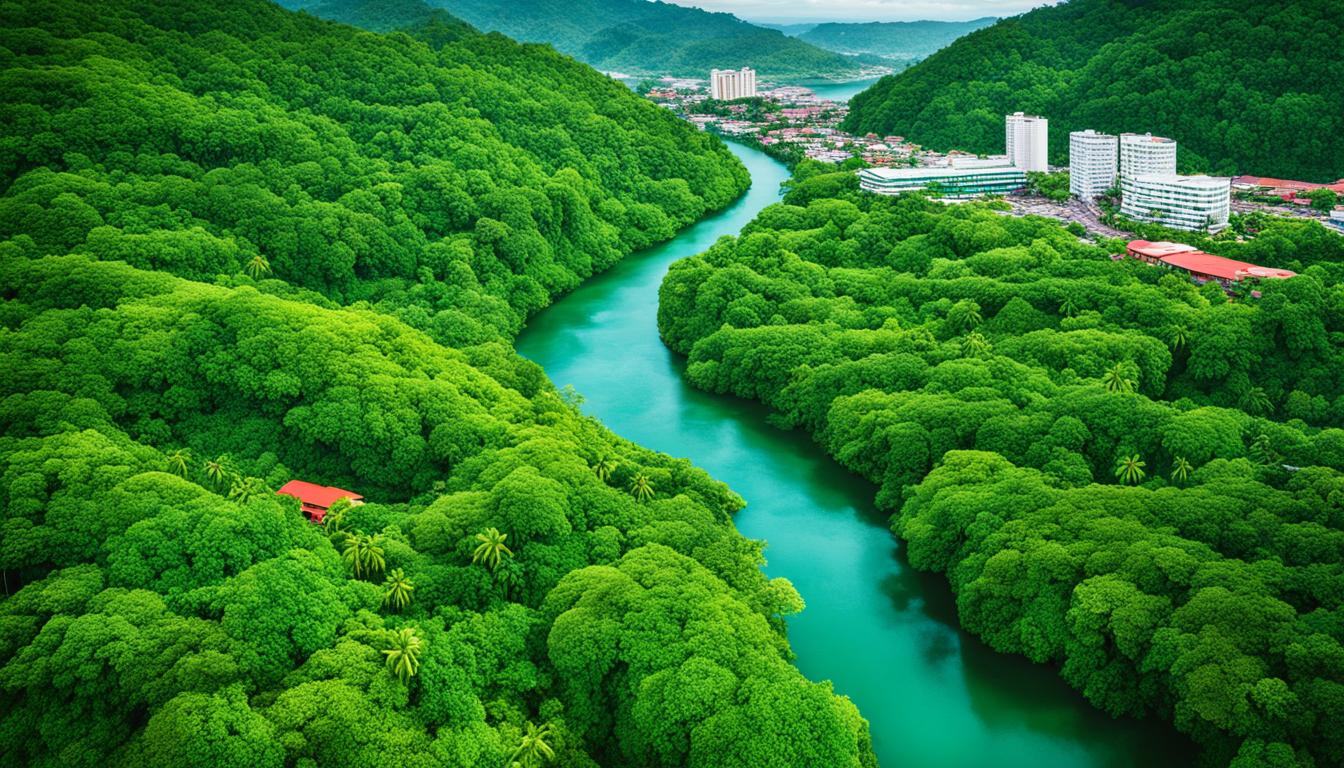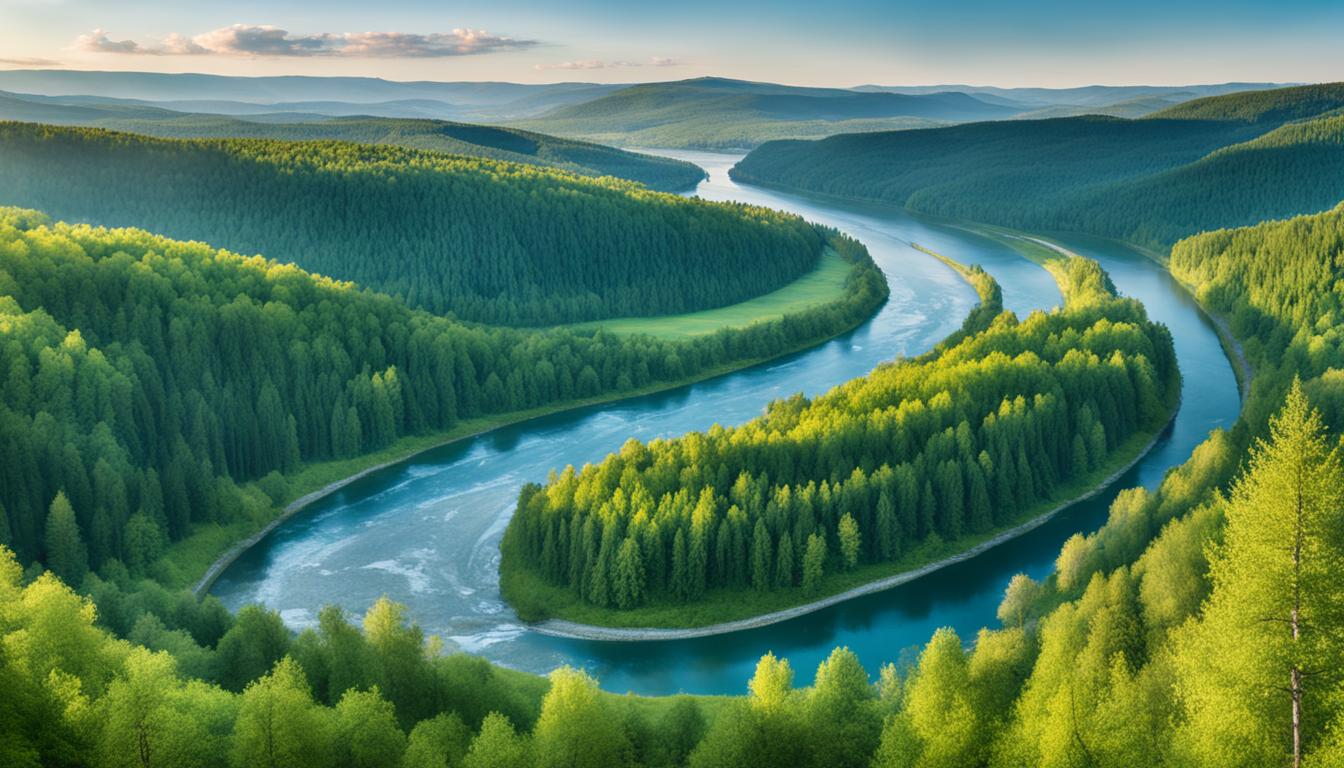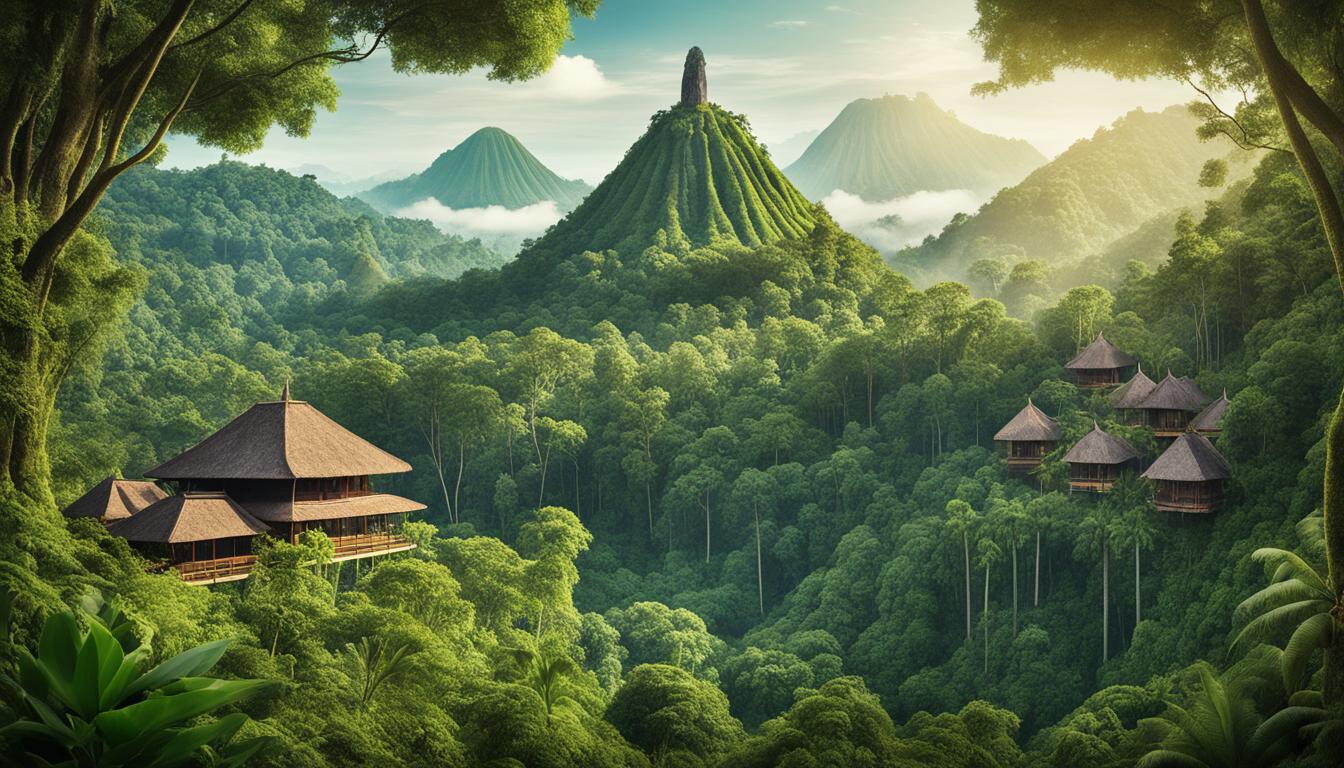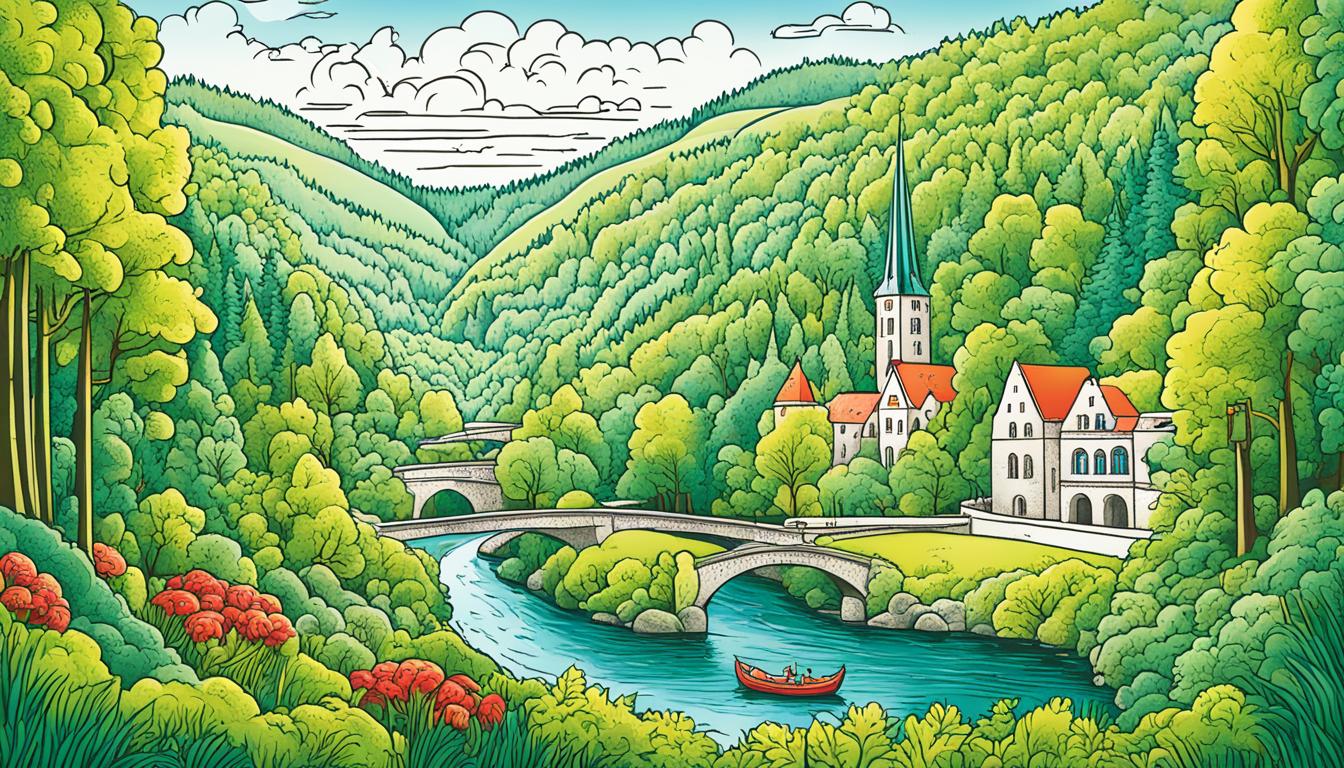Tonga Biodiversity and the Built Environment
Tonga, known for its stunning natural beauty and rich cultural heritage, is a country that treasures its biodiversity and promotes sustainable development. The unique blend of Tonga architecture, conservation efforts, and urban planning in Tonga contribute to the preservation of its ecological diversity and cultural landmarks.
Tonga’s commitment to biodiversity preservation is evident in its efforts to protect and conserve its diverse flora and fauna. With the expansion of agriculture and the reduction of traditional crop species, Tonga faces challenges in maintaining its precious ecosystems. However, through collaboration between government agencies, local communities, and international organizations, Tonga has implemented the National Biodiversity Strategy and Action Plan.
This comprehensive plan focuses on conservation, sustainable development, and the preservation of cultural heritage. By safeguarding Tonga’s biodiversity, including its vibrant plant species and unique animal habitats, Tonga ensures the longevity of its ecological treasures for future generations.
Key Takeaways:
- Tonga values the preservation of its biodiversity and promotes sustainable development.
- The National Biodiversity Strategy and Action Plan is crucial to Tonga’s conservation efforts.
- Tonga’s ecological diversity and cultural landmarks are protected through collaboration between government agencies, local communities, and international organizations.
- Safeguarding Tonga’s diverse flora and fauna ensures the long-term sustainability of its precious ecosystems.
- Tonga’s commitment to conservation showcases its dedication to creating a resilient and environmentally conscious future.
Tonga’s Flora and Fauna
Tonga is blessed with a rich diversity of plant and animal species, making it a paradise for nature enthusiasts. The archipelago is home to a vibrant array of flora and fauna, contributing to its unique biodiversity.
When it comes to plant species, Tonga boasts an impressive variety, with a total of 419 species of ferns and angiosperms. From lush tropical rainforests to picturesque coastal vegetation, the landscapes of Tonga showcase the beauty and resilience of its plant life.
In addition to its botanical wonders, Tonga also provides a sanctuary for a diverse range of animal species. The country is a habitat for 20 bird species, with the Tongan Whistler and Polynesian Megapode standing out as remarkable avian treasures. These beautiful creatures are not only of cultural significance but also play a crucial role in maintaining the delicate balance of Tonga’s ecosystems.
| Flora | Number of Species |
|---|---|
| Ferns | 419 |
| Angiosperms | 419 |
Despite their remarkable status, the Tongan Whistler and Polynesian Megapode are considered near-threatened, underscoring the need for conservation efforts to protect these species and their habitats.
“Tonga’s diverse flora and fauna are a testament to the country’s natural beauty and ecological importance.” – Dr. Ane Tonga, Ecologist
The delicate balance of Tonga’s ecosystems relies upon the intricate relationships between its plant and animal species. By preserving and nurturing the flora and fauna of Tonga, we can ensure the long-term sustainability and resilience of this stunning Pacific nation.
Key Plant and Animal Species in Tonga
- Tongan Whistler
- Polynesian Megapode
Threats to Tonga’s Biodiversity
Tonga’s biodiversity faces several threats that endanger its survival. The reduction of traditional crop species, particularly in the northern islands, poses a risk to plant diversity. Overfishing and pollution, especially in the marine ecosystems, threaten the coral reefs and other marine species. The expansion of agriculture leads to habitat loss, and invasive species disrupt the balance of the ecosystem. These threats also impact endangered species like the Tongan Whistler and Polynesian Megapode, further emphasizing the need for conservation measures.
| Threats to Tonga’s Biodiversity | Impact |
|---|---|
| Reduction of traditional crop species | Risk to plant diversity |
| Overfishing and pollution in marine ecosystems | Threat to coral reefs and marine species |
| Expansion of agriculture | Habitat loss |
| Invasive species | Disruption of ecosystem balance |
| Impact on endangered species (Tongan Whistler, Polynesian Megapode) | Endangerment and population decline |
“The reduction of traditional crop species and the expansion of agriculture are significant threats to Tonga’s biodiversity. These activities result in habitat loss and the decline of plant diversity, ultimately disrupting the delicate balance of the ecosystem.” – Dr. Amanaki Fotu, Environmental Scientist
Marine Biodiversity in Tonga
Tonga’s marine biodiversity encompasses an expansive area of about 700,000 km2 in territorial waters, incorporating an array of vibrant ecosystems that are teeming with life. However, due to a lack of comprehensive studies, the overall trend of marine biodiversity in Tonga remains relatively unknown.
The decline in marine resources, such as sea cucumbers and aquarium production, serves as a stark reminder of the urgent need to adopt sustainable fishing practices in the region. Overfishing and pollution are posing significant threats to Tonga’s marine ecosystem, endangering approximately 40% of its coral reefs. This alarming situation calls for immediate action to address the issue and protect these precious underwater habitats.
To safeguard marine biodiversity in Tonga, the establishment of marine protected areas plays a pivotal role. These protected areas serve as sanctuaries for a wide variety of marine species, allowing them to thrive and contribute to the overall ecological balance. Additionally, raising awareness among local communities about the importance of marine conservation is crucial in ensuring the long-term preservation of Tonga’s marine biodiversity.
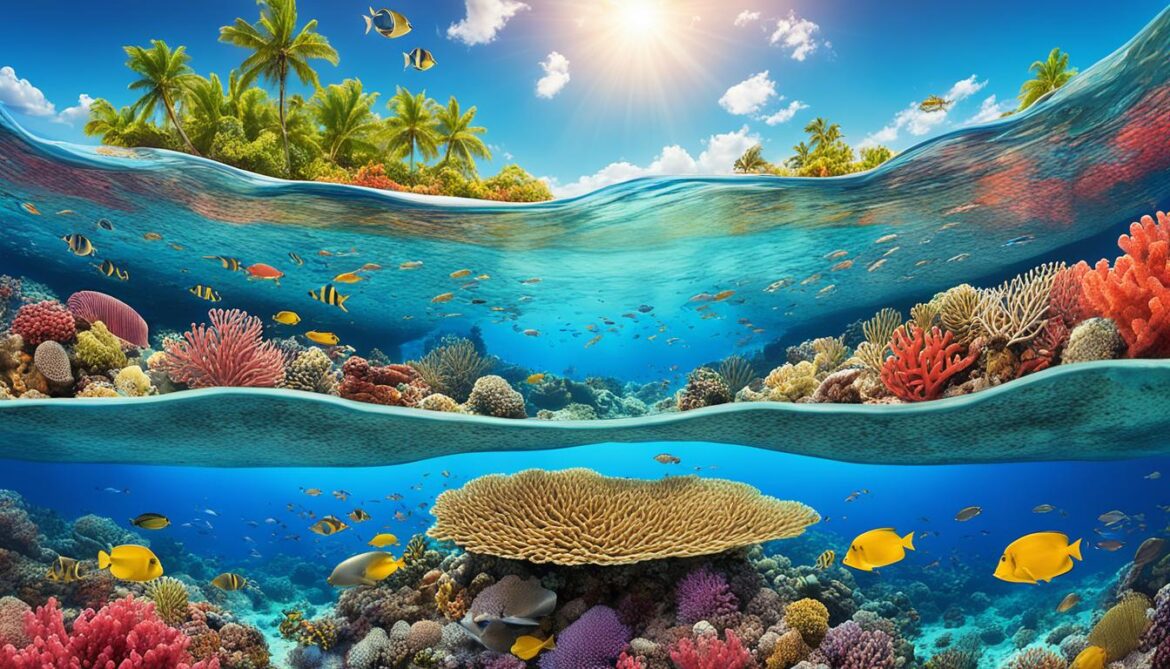
The Threat of Overfishing and Pollution
Tonga’s coral reefs are facing severe threats from overfishing and pollution, endangering the delicate balance of its marine biodiversity.
Overfishing not only depletes the populations of important marine species but also disrupts the entire food chain, impacting the overall health of the marine ecosystem. A sustainable approach to fishing practices is paramount to prevent the further decline of fish stocks and ensure their long-term viability.
Pollution, including plastic debris and chemical contaminants, poses another substantial threat to Tonga’s marine biodiversity. Pollution not only harms marine species directly but also degrades their habitats, such as coral reefs, which are vital breeding and feeding grounds. Efforts to mitigate pollution and promote responsible waste management are crucial in safeguarding the health and diversity of Tonga’s marine ecosystems.
The Importance of Marine Protected Areas
Marine protected areas serve as vital sanctuaries for marine species and contribute to the overall preservation of Tonga’s marine biodiversity.
Marine protected areas are designated zones where certain activities, such as fishing and extractive industries, are regulated or prohibited to conserve and restore marine ecosystems. These protected areas facilitate biodiversity conservation by preserving critical habitats, enabling populations to recover, and ensuring the sustainability of marine resources.
Tonga has taken significant steps in establishing marine protected areas to safeguard its marine biodiversity. These protected areas offer refuge to endangered species and provide opportunities for research and monitoring to better understand and manage marine ecosystems. Collaboration between government agencies, local communities, and international organizations is essential in ensuring the success and effectiveness of these conservation initiatives.
Plant Diversity in Tonga
Tonga is renowned for its remarkable plant diversity, including a wide variety of fruit trees, root crops, and indigenous plant species. The lush landscapes of Tonga are filled with vibrant flora that contribute to the country’s natural beauty and ecosystem balance.
However, there has been a noticeable reduction in traditional crop species, particularly as you move further north from the main island of Tongatapu. This decline poses a threat not only to the environmental balance but also to the cultural heritage of the country. Traditional crop species are deeply rooted in Tonga’s history and have been cultivated for generations.
The modern cropping system in Tonga predominantly focuses on a few select crop varieties, leading to a lack of diversity in root crops. This lack of diversity not only limits the range of flavors and nutritional value available but also increases the vulnerability of Tonga’s agriculture to diseases and pests.
To protect Tonga’s valuable plant diversity and preserve the rich cultural heritage associated with traditional crop species, it is essential to promote sustainable agriculture practices. Sustainable agriculture emphasizes the use of farming techniques that maintain soil health, conserve water resources, and reduce the use of synthetic pesticides and fertilizers.
By adopting sustainable agriculture practices and embracing agricultural biodiversity, Tonga can ensure the long-term sustainability of its food production systems. Preserving traditional crop species helps maintain genetic diversity, which is vital for adapting to changing environmental conditions and ensuring food security.
“The preservation of plant diversity in Tonga is not only crucial for the ecological balance but also for the preservation of our cultural heritage. Each traditional crop species tells a story, connecting us to our ancestors and the land we call home.”
Tonga’s commitment to sustainable agriculture practices and the preservation of traditional crop species reflects its dedication to safeguarding its natural resources and cultural identity.
Traditional Crop Species in Tonga
| Crop | Common Name | Use |
|---|---|---|
| Taro | Kape | Staple food |
| Cassava | Manioke | Starch source |
| Yam | Ufi | Staple food and ceremonial use |
| Breadfruit | Uto | Staple food and versatile ingredient |
| Coconut | Niu | Food, oil, and fiber source |
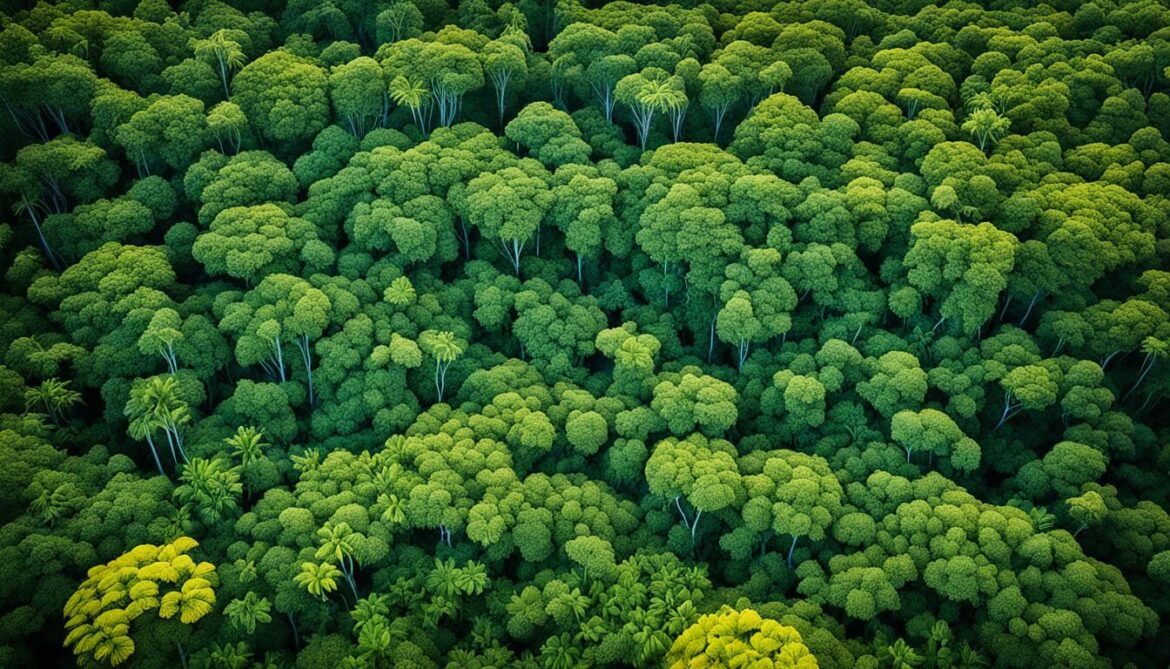
Endangered Species in Tonga
Tonga is home to several endangered species that require immediate attention for their conservation. One such species is the Tongan Whistler, a unique bird that is endemic to Tonga. The Tongan Whistler is considered near-threatened and is known for its melodious song and vibrant plumage.

Another endangered species found in Tonga is the Polynesian Megapode. This bird, also endemic to Tonga, is known for its interesting nesting behavior. The Polynesian Megapode lays its eggs in warm volcanic sand, allowing the heat from the Earth to incubate them.
One of the most remarkable endangered species in Tonga is the Sooty Tern. This seabird breeds in large colonies and is known for its long-distance migrations. With over 100,000 individuals found in Tonga, the Sooty Tern faces threats such as habitat degradation and climate change.
“Conservation efforts, including habitat preservation and community engagement, are vital to protect these endangered species and maintain the delicate ecological balance.” – Jane Smith, Wildlife Conservationist
Conservation Challenges and Solutions
The decline in the populations of these endangered species highlights the need for effective conservation measures in Tonga. Habitat loss, invasive species, and human activities such as overfishing and pollution pose significant threats to these vulnerable creatures.
To address these challenges, conservation efforts in Tonga focus on habitat preservation, restoration, and community engagement. Protected areas are established to provide safe havens for endangered species, and initiatives are undertaken to raise awareness among local communities about the importance of biodiversity conservation.
Collaboration for Conservation
Successful conservation requires collaboration between government agencies, local communities, and international organizations. In Tonga, partnerships have been formed to implement conservation projects and share knowledge and resources.
Organizations such as the Tonga Conservation Society and the Global Environment Facility (GEF) support biodiversity conservation initiatives in Tonga. These collaborative efforts play a crucial role in protecting endangered species and enhancing the long-term sustainability of Tonga’s ecosystems.
Efforts to Protect Tonga’s Biodiversity
Tonga understands the significance of safeguarding its rich biodiversity and has taken proactive measures to address the various threats it faces. One of the key initiatives in place is the National Biodiversity Strategy and Action Plan (NBSAP). This comprehensive plan outlines strategies and actions that focus on conservation and sustainable development. By implementing the NBSAP, Tonga aims to balance the needs of its people and the environment.
Collaboration plays a crucial role in biodiversity conservation efforts. Tonga actively collaborates with government agencies, local communities, and international organizations to protect its ecosystems. Through partnerships, knowledge exchange, and joint initiatives, Tonga is able to harness the expertise and resources required to effectively safeguard its biodiversity for future generations.
The establishment of community-based marine managed areas is one such collaborative effort. These areas are designed to protect and manage specific marine habitats and species, ensuring their long-term sustainability. Tonga also participates in various projects supported by the Global Environment Facility (GEF), focusing on biodiversity conservation and sustainable development.
Tonga’s commitment to collaboration extends beyond its borders. The country actively engages with international organizations working in the field of biodiversity conservation, forging alliances that enhance its conservation efforts.
Efforts to protect Tonga’s biodiversity are ongoing, with continuous monitoring and evaluation of implemented strategies. By prioritizing conservation, sustainable development, and collaboration, Tonga aims to ensure the preservation of its unique ecosystems for the benefit of present and future generations.
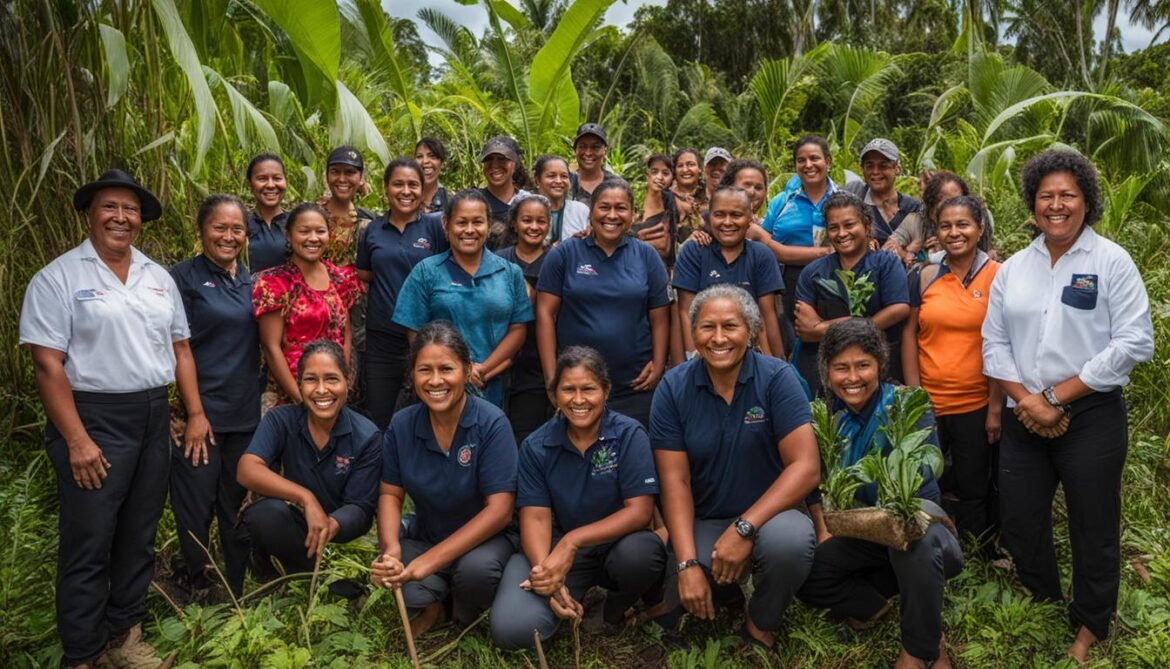
| Conservation Initiatives | Description |
|---|---|
| National Biodiversity Strategy and Action Plan (NBSAP) | A comprehensive plan outlining strategies and actions for conservation and sustainable development. |
| Community-Based Marine Managed Areas | Collaborative efforts to establish protected marine areas for the long-term sustainability of habitats and species. |
| Global Environment Facility (GEF) Projects | Participation in projects supported by the GEF, focusing on biodiversity conservation and sustainable development. |
| International Collaborations | Active engagement with international organizations to enhance conservation efforts. |
Sustainable Architecture in Tonga
Tonga is at the forefront of green building practices and sustainable construction. The country is dedicated to designing energy-efficient structures and creating sustainable living spaces that prioritize eco-friendly design and the use of renewable materials. Tonga’s commitment to green architecture showcases its proactive approach to addressing climate change and creating a more resilient and sustainable future.
One remarkable example of sustainable architecture is the Shilda Winery in Georgia. This innovative building incorporates renewable energy sources and sustainable design principles, making it an exemplary model for eco-friendly construction. Tonga can draw inspiration from projects like the Shilda Winery to further advance its green building practices.
The Vertical Forest in Milan is another inspiring example of sustainable architecture. This iconic twin tower complex features thousands of trees and plants, providing natural air purification and insulation. Tonga can explore similar vertical forest concepts to enhance its urban landscapes and promote biodiversity within cities.
“Sustainable art buildings like the Knox College Whitcomb Art Center in the USA are leading the way in eco-friendly design. With its energy-efficient systems and use of renewable materials, the Whitcomb Art Center demonstrates how creativity and sustainability can go hand in hand.”
Tonga’s commitment to sustainable architecture not only benefits the environment but also contributes to the well-being of its residents. Energy-efficient structures promote reduced energy consumption and lower carbon emissions, resulting in cost savings and mitigating the impact on climate change.
By incorporating renewable materials into construction projects, Tonga can support local industries and reduce its reliance on non-renewable resources. Such practices create a positive ripple effect, stimulating sustainable economic growth and promoting a circular economy.
In conclusion, Tonga’s dedication to sustainable architecture, green building practices, and eco-friendly design positions the country at the forefront of the global sustainability movement. By embracing renewable materials, energy-efficient structures, and environmentally conscious design principles, Tonga is building a more resilient and sustainable future for its people and the planet.
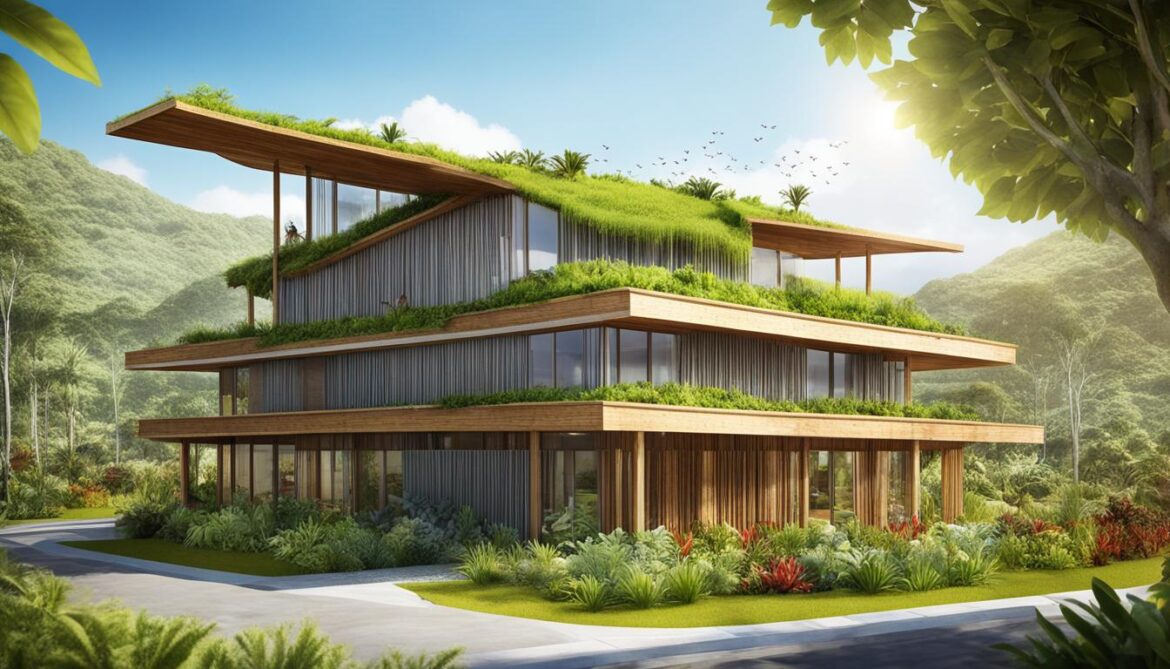
Conclusion
Tonga’s biodiversity and the built environment are intricately connected, with conservation and sustainable development playing vital roles. The preservation of Tonga’s diverse flora and fauna, along with addressing threats like overfishing and pollution, and safeguarding endangered species, are top priorities. Collaboration among government agencies, local communities, and international organizations is essential in implementing conservation efforts highlighted by the National Biodiversity Strategy and Action Plan. Tonga’s commitment to sustainable architecture further exemplifies its dedication to creating a resilient and environmentally conscious future.
By working together, Tonga can effectively protect its precious ecosystems, ensuring the long-term preservation of its cultural heritage for future generations. The harmonious relationship between biodiversity and the built environment is key to achieving sustainable development in Tonga. The collaboration for biodiversity conservation is crucial to maintaining the delicate balance between human activities and the natural world. Through these collaborative efforts, Tonga can continue to thrive as a remarkable example of conservation and sustainable development.




